

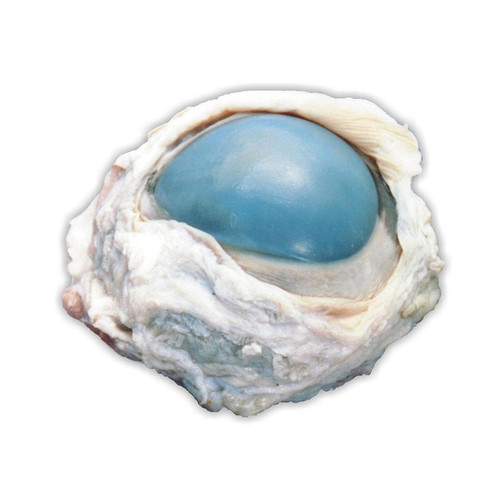



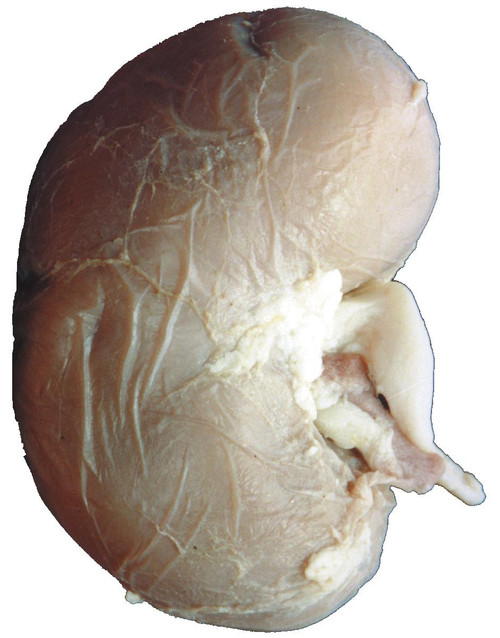


category
Dissection Specimens

This mammal heart specimen is similar in size to a human heart. It's a great hands-on experience to study the anatomy heart!
Ages 11+
Out of Stock, Expected to Ship: 04/20/2024
Need It Fast? See Delivery Options In Cart.
This item only ships to a street address in the 50 US states.

Fetal pigs are commonly used to study mammal anatomy. This medium-sized preserved pig dissection specimen has blood vessels that are double injected with red and blue latex to make veins and arteries easy to identify.
Ages 11+
In Stock & Ready to Ship
Need It Fast? See Delivery Options In Cart.
This item only ships to a street address in the 50 US states.

Study mammal anatomy with this preserved brain specimen (cranial nerves attached)! Through dissection, students will observe external & internal brain structures, such as the corpus callosum, pituitary gland & more.
Ages 11+
In Stock & Ready to Ship
Need It Fast? See Delivery Options In Cart.
This item only ships to a street address in the 50 US states.

Since a cow's eye is similar to a human's eye, a cow eye dissection is a great way to discover how eyes work!
Ages 11+
In Stock & Ready to Ship
Need It Fast? See Delivery Options In Cart.
This item only ships to a street address in the 50 US states.
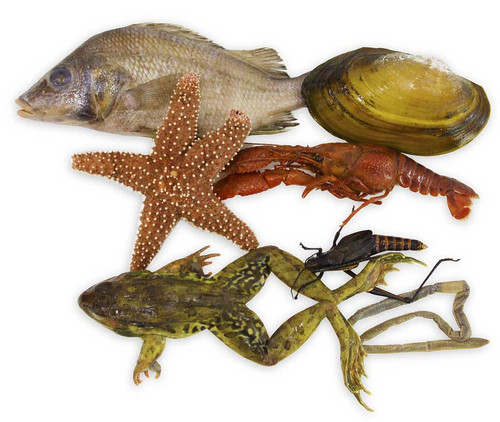
This set of seven large-sized preserved animal specimens is a great way to learn about & compare the anatomy of several animals. Explore the anatomy of a grass frog, earthworm, starfish, clam, crayfish, perch & grasshopper!
Ages 11+
In Stock & Ready to Ship
Need It Fast? See Delivery Options In Cart.
This item only ships to a street address in the 50 US states.

The vessels in this shark dissection specimen are double injected with red and blue latex. Explore the circulatory, nervous, and urogenital systems of the dogfish shark. Learn about their fins, buoyancy, and more!
Ages 11+
In Stock & Ready to Ship
Need It Fast? See Delivery Options In Cart.
This item only ships to a street address in the 50 US states.

Enliven your study of biology with this plain preserved crayfish specimen!
Ages 8+
In Stock & Ready to Ship
Need It Fast? See Delivery Options In Cart.
This item only ships to a street address in the 50 US states.

This medium plain preserved grass frog specimen has a body length of 3.5" to 4", large enough to see all the internal organs and external structures.
Ages 11+
In Stock & Ready to Ship
Need It Fast? See Delivery Options In Cart.
This item only ships to a street address in the 50 US states.

This large-sized fetal pig preserved specimen has blood vessels that are double injected with red & blue latex. Fetal pig dissections make for excellent learning opportunities and are commonly used to study mammal anatomy.
Ages 11+
In Stock & Ready to Ship
Need It Fast? See Delivery Options In Cart.
This item only ships to a street address in the 50 US states.

Large sized 10-13" plain fetal pig preserved specimen.
Ages 11+
In Stock & Ready to Ship
Need It Fast? See Delivery Options In Cart.
This item only ships to a street address in the 50 US states.

This medium preserved grass frog specimen has arteries single injected with red latex.
Ages 11+
In Stock & Ready to Ship
Need It Fast? See Delivery Options In Cart.
This item only ships to a street address in the 50 US states.

At 4-4.5" in body length, this preserved grass frog specimen makes it easy to locate and identify internal organs and external structures. Double-injection allows unmistakable visualization and tracing of the vascular system.
Ages 11+
In Stock & Ready to Ship
Need It Fast? See Delivery Options In Cart.
This item only ships to a street address in the 50 US states.

This extra-large preserved grass frog has a body length of 4.5" to 5.5" and is an excellent dissection specimen. Arteries are injected with red latex & veins are injected with blue latex to easily trace the vascular system.
Ages 11+
In Stock & Ready to Ship
Need It Fast? See Delivery Options In Cart.
This item only ships to a street address in the 50 US states.

This medium plain preserved grey perch specimen has a length of 7"-9".
Ages 11+
In Stock & Ready to Ship
Need It Fast? See Delivery Options In Cart.
This item only ships to a street address in the 50 US states.

Study the body systems of an earthworm with this 7-10" dissection specimen!
Ages 8+
In Stock & Ready to Ship
Need It Fast? See Delivery Options In Cart.
This item only ships to a street address in the 50 US states.

Learn about internal & external snake anatomy with a snake dissection! The species of this preserved snake specimen varies, but it is usually from the Genus Thamnophis. 18-22" long; not injected.
Ages 11+
In Stock & Ready to Ship
Need It Fast? See Delivery Options In Cart.
This item only ships to a street address in the 50 US states.

This preserved pigeon specimen has vessels double injected with red and blue latex to make it easier to find the various organs.
Ages 11+
In Stock & Ready to Ship
Need It Fast? See Delivery Options In Cart.
This item only ships to a street address in the 50 US states.

Dissect this mammal pluck to better understand respiratory systems, circulatory systems, and other systems & characteristics of internal mammal anatomy. Includes the heart, lungs & fully attached trachea!.
Ages 11+
In Stock & Ready to Ship
Need It Fast? See Delivery Options In Cart.
This item only ships to a street address in the 50 US states.
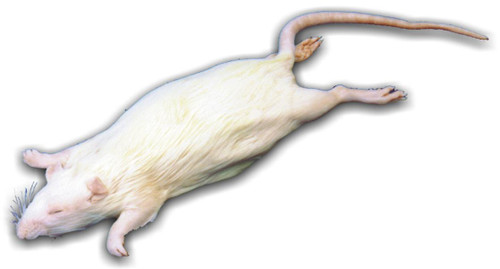
Rat specimen for dissection. Vessels are double injected with red & blue latex.
Ages 11+
In Stock & Ready to Ship
Need It Fast? See Delivery Options In Cart.
This item only ships to a street address in the 50 US states.

Do a squid dissection to learn all about a squid's respiratory, circulatory, excretory, reproductive, digestive, skeletal, muscular, and nervous systems! This plain preserved squid specimen is typically genus Loligo.
Ages 11+
In Stock & Ready to Ship
Need It Fast? See Delivery Options In Cart.
This item only ships to a street address in the 50 US states.

Use this large plain preserved perch specimen for a hands-on exploration of fish anatomy!
Ages 11+
In Stock & Ready to Ship
Need It Fast? See Delivery Options In Cart.
This item only ships to a street address in the 50 US states.
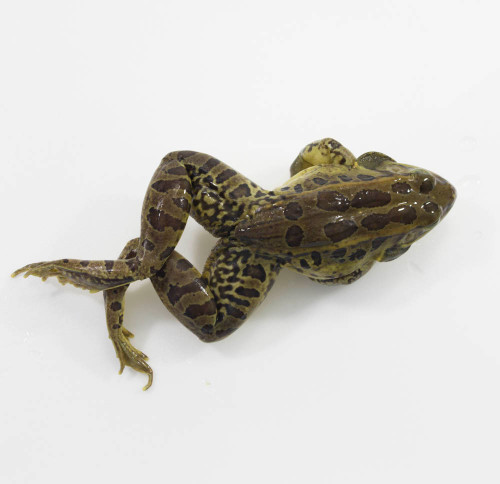
This large plain preserved grass frog specimen has a 4" to 4.5" body length, making external structures and internal organs easily identifiable.
Ages 11+
In Stock & Ready to Ship
Need It Fast? See Delivery Options In Cart.
This item only ships to a street address in the 50 US states.

These preserved starfish dissection specimens are typically genus Asterias.
Ages 8+
In Stock & Ready to Ship
Need It Fast? See Delivery Options In Cart.
This item only ships to a street address in the 50 US states.

An excellent way for students to study mammal anatomy is to dissect a fetal pig! This large preserved specimen has vessels that are double injected with red and blue latex to make veins and arteries easy to identify.
Ages 11+
In Stock & Ready to Ship
Need It Fast? See Delivery Options In Cart.
This item only ships to a street address in the 50 US states.

Using a fetal pig for dissection, students can explore and learn so much about mammal anatomy. This affordable specimen measures between 7 & 10 inches in length. Will remain free of decay for 6 months from date of purchase!
Ages 11+
In Stock & Ready to Ship
Need It Fast? See Delivery Options In Cart.
This item only ships to a street address in the 50 US states.

This large plain dogfish shark specimen is 22"-27" long and ideal for an advanced dissection. A dogfish shark dissection provides an engaging, hands-on way for students to learn about an interesting marine specimen!
Ages 11+
In Stock & Ready to Ship
Need It Fast? See Delivery Options In Cart.
This item only ships to a street address in the 50 US states.

This uterus contains an embryo typically 2"-6" in length and allows for the study of the uterus, embryo, placenta, and umbilical attachment of a large mammal. This is a plain preserved specimen.
Ages 11+
In Stock & Ready to Ship
Need It Fast? See Delivery Options In Cart.
This item only ships to a street address in the 50 US states.

Plain preserved mammal kidney specimen. This specimen provides a great hands-on experience for learning all the anatomy of the human kidney!
Ages 11+
In Stock & Ready to Ship
Need It Fast? See Delivery Options In Cart.
This item only ships to a street address in the 50 US states.

This single injected 8-12" squid dissection specimen lets you learn about its systems: respiratory, circulatory, excretory, reproductive, digestive, nervous, skeletal, and muscular.
Ages 11+
In Stock & Ready to Ship
Need It Fast? See Delivery Options In Cart.
This item only ships to a street address in the 50 US states.

Bullfrogs provide a better dissection experience than grass frogs because of larger body mass, better-defined organs & well-developed muscle structure. Arteries are injected with red latex and veins with blue latex.
Ages 11+
In Stock & Ready to Ship
Need It Fast? See Delivery Options In Cart.
This item only ships to a street address in the 50 US states.
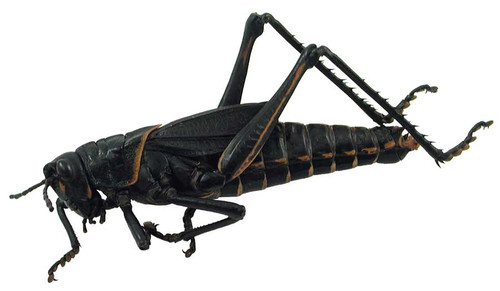
Our plain preserved Lubber grasshoppers are large 3" Grade A. Genus & species are typically Romalea microptera.
Ages 8+
In Stock & Ready to Ship
Need It Fast? See Delivery Options In Cart.
This item only ships to a street address in the 50 US states.

Sheep eye dissection offers a lower-cost alternative to cow eye dissection. Like a cow eye, a sheep eye is similar to the human eye, making it a popular dissection specimen. Identify the cornea, iris, pupil & more!
Ages 11+
In Stock & Ready to Ship
Need It Fast? See Delivery Options In Cart.
This item only ships to a street address in the 50 US states.

This extra-large plain grass frog specimen provides a straightforward dissection experience, as its 4.5" to 5.5" body length makes the internal organs and external structures easy to locate and identify.
Ages 11+
In Stock & Ready to Ship
Need It Fast? See Delivery Options In Cart.
This item only ships to a street address in the 50 US states.

The vessels of this large shark are double injected with red and yellow latex.
Ages 11+
In Stock & Ready to Ship
Need It Fast? See Delivery Options In Cart.
This item only ships to a street address in the 50 US states.

A rat dissection is an excellent and engaging biology or life science activity! Dissection of this pregnant rat specimen allows both students to investigate the uterus, embryos, placenta & umbilical attachment of a mammal.
Ages 11+
Out of Stock, Expected to Ship: 06/28/2024
Need It Fast? See Delivery Options In Cart.
This item only ships to a street address in the 50 US states.

This plain preserved anole (lizard) specimen is large enough to see all the internal organs and external structures. It is great for a dissection lab experience at a low cost and will give your student a memorable life experience.
Ages 8+
In Stock & Ready to Ship
Need It Fast? See Delivery Options In Cart.
This item only ships to a street address in the 50 US states.
Shop the HST store for high-quality, long-lasting, preserved specimens for dissection.
All dissection specimens come with our 90-day satisfaction guarantee. HST specimens fit homeschool curriculums, classroom labs, and co-op projects.
You’ll find that our specimens come in a variety of sizes, quantities, and kits. Invertebrate specimens (animals without backbones) include clams, crayfish, earthworms, grasshoppers, squid, and starfish. Vertebrate specimens (animals with backbones, muscles, and skeletons) include fetal pigs, fish, frogs, lampreys, minks, pigeons, rabbits, rats, sharks, snakes, and turtles.
We also sell mammal organs for dissection. You can choose from a cow’s eye and a sheep’s heart, eye, kidney, brain, uterus or pluck.
“I have purchased dissection specimens several times over the years from a different supplier. They were always quite dry and difficult to work with. The quality of these specimens, however, have been superior. They are larger and moist, making the process of dissection and identification much easier. (Animal Specimen Set of 7, Large)”
— Christine R.
“These sharks came well packaged in a thick vacuum sealed plastic. Ordered 29 sharks for my homeschool science club and HST ensured that ever shark made it without damage by careful packing and shipping. (Dogfish Shark Specimen, Double Injected)”
— Timothy L.
“We had a good size group doing the dissection with our homeschool group. The optic nerve was easily spotted by the kids and the eyes stood up well to the handling of kids exploring. We are now doing the Kidney next week. (Cow Eye for Dissection Specimen)”
— Marianne N.
“All the specimens were in great condition, and decent sized to see everything we needed to see. I would recommend and would purchase again. (Animal Specimens Set of 9 with Pig)”
— Sharon P.
We guarantee that your specimen(s) will arrive fully preserved and void of decay. Your preserved specimen will also stay moist for one year after delivery and do not need refrigeration. This means you won’t have to worry about them touching or contaminating your food.
For best results, keep dissection specimens out of direct sunlight and store them in a room that doesn’t trap heat (i.e. not the attic). Your preserved specimens may discolor over time; this discoloration is normal and does not signal decay.
Seal your dissected specimens in a Ziploc bag after use and be sure to remove any air pockets. Ideally, you’ll want to finish a dissection within one week. If that’s not possible, you can refresh the dissection specimen with glycerin.
Chemical solutions preserve animal specimens. These solutions are also known as fixatives or embalming fluids. You may remember formaldehyde from your lab days in schools. That’s the “chemical” smell many of us… despise.
But, fortunately, we use a lot less formaldehyde today. We use it as an initial preservative, before displacing it with a glycol solution. Then we displace the glycol with a water solution. The infamous “preservative” smell? It's almost nonexistent! Some fish specimens, like perch and dogfish, may contain a trace, natural scent.
We recommend that your students wear latex or nitrile disposable gloves during dissections. We also recommend eye protection, to avoid traces of solution, during dissections.
HST sells plain, single-injected, and double-injected specimens individually, or as part of a dissection kit. Plain specimens are exactly as they sound—nothing added. You can see the animal's arteries in a single injection; they’re red. In a double injection, you can see red arteries and blue veins. The injections are made from rubber (e.g., latex).
All preserved specimens come with a safety data sheet. Most of our customers order a dissection guide if they're working on an unfamiliar specimen.
Preservatives keep dissection specimens limber and flexible. "Soft" specimens enable your dissection tools to work properly. They also prevent decay and the spread of disease. They allow us to ship unspoiled specimens to street addresses in the United States (all 50 states).
Without preservatives, animal dissections would be rare and expensive. Why? You would need access to recently-dead (“fresh”) specimens. You would also have to work fast to avoid decomposition. Finally, you would need medical-grade protective clothing to avoid bacterial and fungal diseases.
Conducting dissections with preserved specimens has led to breakthroughs in anatomy, biology, and other life sciences.
For more ideas, see our Owl Pellet Kit.
We get it. Science can be messy. But Home Science Tools' products and service can handle it.
Our products are durable, reliable, and affordable to take you from the field to the lab to the kitchen. They won't let you down, no matter what they're up against. Whether it's (over)eager young scientists year after year, or rigorous requirements that come once-in-a lifetime.
And if your science inquiry doesn't go as expected, you can expect our customer service team to help. Count on friendly voices at the other end of the phone and expert advice in your inbox. They're not happy until you are.
Bottom line? We guarantee our products and service won't mess up your science study—no matter how messy it gets.
Questions? Get in touch with our Customer Service team.